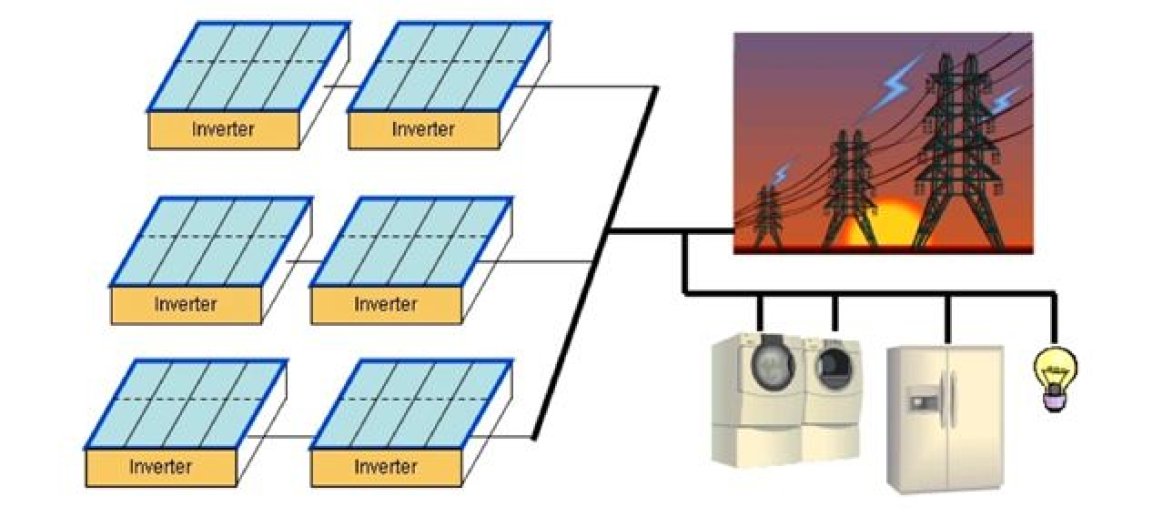
A solar inverter or photovoltaic (PV) inverter is a critical component in a photovoltaic system. Its function is converting the intrinsic direct current (DC) output of the solar modules into a utility frequency alternating current (AC) that can be fed into the commercial electrical grid or used directly by standard electrical devices. In conventional PV installations, a number of solar modules are wired in series, creating a PV array or string. Multiple strings are then connected in parallel to a central inverter that feeds the grid. In contrast, a solar microinverter is a small device that converts DC from a single solar panel to AC. The electric power from multiple microinverters is then combined and fed into the grid. The two approaches each have distinct advantages and disadvantages whose relative importance may vary significantly for different kinds of PV installations.
String Inverters
Inverters are a major part of the balance of system (BOS) cost of PV installations, i.e., the cost of everything but the solar panels. Central string inverters offer substantial economies of scale in large systems, particularly those in excess of 100 kW in size. Megawatt inverters can reduce the dollars-per-watt cost of power conversion by 90%. For utility-scale PV systems, total costs including operating and maintenance costs are paramount, and large central inverters are dominant in that market.
The main shortcoming of the central inverter is that when solar panels are strung together, the string of panels will be performance-limited by the worst of the individual panels within it. This is not only determined by intrinsic panel-to-panel variations but is also dynamic. For example, if a single panel is shaded, its output drops dramatically, which affects the output of the string as a whole even if the other panels are not shaded. In addition, inverters use a technique known as maximum power point tracking (MPPT) to optimize PV output by adjusting applied loads. Once again, variations in an individual panel in a string will cause the inverter to change the MPPT settings, thereby diverging from optimal performance.
Microinverters
Microinverters have several advantages over conventional central inverters. The main advantage is that since each panel has its own inverter, reducing or even losing the output from a single panel does not disproportionately affect the output of an entire array. Each microinverter is able to obtain optimum power by performing MPPT for its own panel. From a maintenance/reliability perspective, the failure of a single panel or inverter in this type of system will have a minimal impact on overall system performance rather than being a catastrophic event.
The main disadvantage of the microinverter concept has traditionally been cost. Because each panel has to have its own inverter with much of the functionality of a central inverter, the costs are marginally greater. On the other hand, the economics of microinverters are rapidly improving as microelectronics steadily increase in level of integration and decrease in price.
Microinverter-based PV systems also simplify the overall BOS. For example, they eliminate DC wiring, high-voltage DC switch boxes and protection circuits, and the facilities that house central inverters.
Microinverters have become common where array sizes are small and maximizing performance from every panel is an important consideration. In smaller systems, the differential in price-per-watt for the inverters has less effect on overall system cost. The improvement in energy collection given a fixed size array can offset this difference in cost. For this reason, microinverters have been most successful in the residential market, where limited roof space and multiple sources of shade constrain system performance. As the price of microinverters comes down, the types of systems for which this technology is attractive will continue to expand.
Resources
- Forbes, "Enphase's Rooftop Solar Revolution"
- Renewable Energy World, "Micro-inverters vs. Central Inverters: Is There a Clear Winner?"